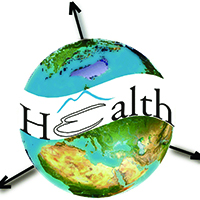Ecological niche modeling of Babesia sp infection in wildlife experimentally evaluated in questing Ixodes ricinus.

Submitted: 2 December 2019
Accepted: 4 February 2020
Published: 17 June 2020
Accepted: 4 February 2020
Abstract Views: 1329
PDF: 720
HTML: 64
HTML: 64
Publisher's note
All claims expressed in this article are solely those of the authors and do not necessarily represent those of their affiliated organizations, or those of the publisher, the editors and the reviewers. Any product that may be evaluated in this article or claim that may be made by its manufacturer is not guaranteed or endorsed by the publisher.
All claims expressed in this article are solely those of the authors and do not necessarily represent those of their affiliated organizations, or those of the publisher, the editors and the reviewers. Any product that may be evaluated in this article or claim that may be made by its manufacturer is not guaranteed or endorsed by the publisher.
Similar Articles
- Xavier Barber, David Conesa, Silvia Lladosa, Antonio Lòpez-Quílez, Modelling the presence of disease under spatial misalignment using Bayesian latent Gaussian models , Geospatial Health: Vol. 11 No. 1 (2016): Valencia Issue
- Mohamed R. Habib, Yun-Hai Guo, Shan Lv, Wen-Biao Gu, Xiao-Heng Li, Xiao-Nong Zhou, Predicting the spatial distribution of Biomphalaria straminea, a potential intermediate host for Schistosoma mansoni, in China , Geospatial Health: Vol. 11 No. 3 (2016)
- Moara de Santana Martins Rodgers, Elivelton Fonseca, Prixia del Mar Nieto, John B. Malone, Jeffery C. Luvall, Jennifer C. McCarroll, Ryan Harry Avery, Maria Emilia Bavia, Raul Guimaraes, Xue Wen, Marta Mariana Nascimento Silva, Deborah D.M.T. Carneiro, Luciana Lobato Cardim, Use of soil moisture active passive satellite data and WorldClim 2.0 data to predict the potential distribution of visceral leishmaniasis and its vector Lutzomyia longipalpis in Sao Paulo and Bahia states, Brazil , Geospatial Health: Vol. 17 No. 1 (2022)
- Azizur Rahman, Estimating small area health-related characteristics of populations: a methodological review , Geospatial Health: Vol. 12 No. 1 (2017)
- Felipe J. Colòn-González, Adrian M. Tompkins, Riccardo Biondi, Jean Pierre Bizimana, Didacus Bambaiha Namanya, Assessing the effects of air temperature and rainfall on malaria incidence: an epidemiological study across Rwanda and Uganda , Geospatial Health: Vol. 11 No. s1 (2016): HEALTHY FUTURES
- Aswi Aswi, Septian Rahardiantoro, Anang Kurnia, Bagus Sartono , Dian Handayani, Nurwan Nurwan, Susanna Cramb, Childhood stunting in Indonesia: assessing the performance of Bayesian spatial conditional autoregressive models , Geospatial Health: Vol. 19 No. 2 (2024)
- Sarsenbay K. Abdrakhmanov, Akhmetzhan A. Sultanov, Kanatzhan K. Beisembayev, Fedor I. Korennoy, Dosym B. Кushubaev, Ablaikhan S. Каdyrov, Zoning the territory of the Republic of Kazakhstan as to the risk of rabies among various categories of animals , Geospatial Health: Vol. 11 No. 2 (2016)
- Angela M. Cadavid Restrepo, Yu Rong Yang, Donald P. McManus, Darren J. Gray, Tamsin S. Barnes, Gail M. Williams, Ricardo J. Soares Magalhães, Archie C.A. Clements, Spatial prediction of the risk of exposure to Echinococcus spp. among schoolchildren and dogs in Ningxia Hui Autonomous Region, People's Republic of China , Geospatial Health: Vol. 13 No. 1 (2018)
- Su Yun Kang, Susanna M. Cramb, Nicole M. White, Stephen J. Ball, Kerrie L. Mengersen, Making the most of spatial information in health: a tutorial in Bayesian disease mapping for areal data , Geospatial Health: Vol. 11 No. 2 (2016)
- Adrian M. Tompkins, Luca Caporaso, Assessment of malaria transmission changes in Africa, due to the climate impact of land use change using Coupled Model Intercomparison Project Phase 5 earth system models , Geospatial Health: Vol. 11 No. s1 (2016): HEALTHY FUTURES
<< < 1 2 3 4 5 6 7 8 9 10 > >>
You may also start an advanced similarity search for this article.

 https://doi.org/10.4081/gh.2020.843
https://doi.org/10.4081/gh.2020.843




